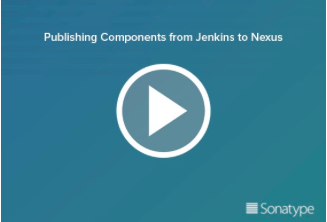Generally speaking, when you talk to developers about new software releases, it can be a love or hate it kind of conversation. A new version of software can take many forms. You can find a lot has changed on the surface with new features but quickly realize it’s just new shine on the same old application. Alternatively, you can download a new release and the upgrade is not only the same old car with a new layer of paint but you get a powerful new engine and a new set of wheels. Like changing from a Toyota Camry to Tesla Model S, it’s still a car but a much cooler innovative car. This analogy holds true for Nexus 2.6, released today!
The Nexus 2.5 release was focused on fixing a large number of smaller issues that amounted to a big benefit as well as a few notable features like scheduled tasks for cleaning up old releases. (now you can move a continuous deployment without the headache of a release repository filling up) All great stuff appreciated by our users so we decided to do it again.
Since Nexus is an open source product you could, of course, just look at the changelog and weed through the details or read the release notes and follow all the links to the different issue tracker entries but before you do that, let me tell you about the delicious bits first. (then of course, go back and read the release notes)
One of the most noticeable changes for a Nexus server administrator is now Java 7 is the required runtime. Java 7 has been the more performant and suggested runtime environment for a few releases and now with the end of support for Java 6 itself we decided to follow that lead. With the move to Java 7 we can now take advantage of the language and runtime features allowing us to have a cleaner code base and a more robust environment.
Another important feature for the administrator is the support for separate proxy servers for http and https urls. By implementing this new feature we have removed the repository specific proxy server configuration. But if you are upgrading, you also need to make sure the platform specific startup scripts are deprecated and switch to the main platform independent scripts in /bin/.
You’ll also find significant performance improvements with the switch to using Java NIO as the default storage for all Lucene indexes in Nexus. It’s used for searches as well as the timeline tracking and system feeds. The Automatic Routing we introduced with Nexus 2.4 brought simplified configuration and performance improvements for proxy repositories and with your help and feedback we’ve made some minor fixes to routing in the 2.6 release as well.
You can take advantage of expanded support for P2 group repositories, YUM repositories and NuGet repositories and generally additional repository management fixes. Minor improvements were also made to staging as well.
And we recognize this isn’t the end, we’ll continue to make needed improvements and bug fixes in follow on releases but hopefully at this stage, I already convinced you to upgrade to the latest version or maybe give our evaluation bundle a try. Benefit from a host of performance and usability enhancements in comparison to older releases. Use this opportunity to take advantage of all the new goodies from recent releases you might not have used and move straight to 2.6. Get it from the download page and don't forget to upgrade to Java 7 as your runtime environment.






